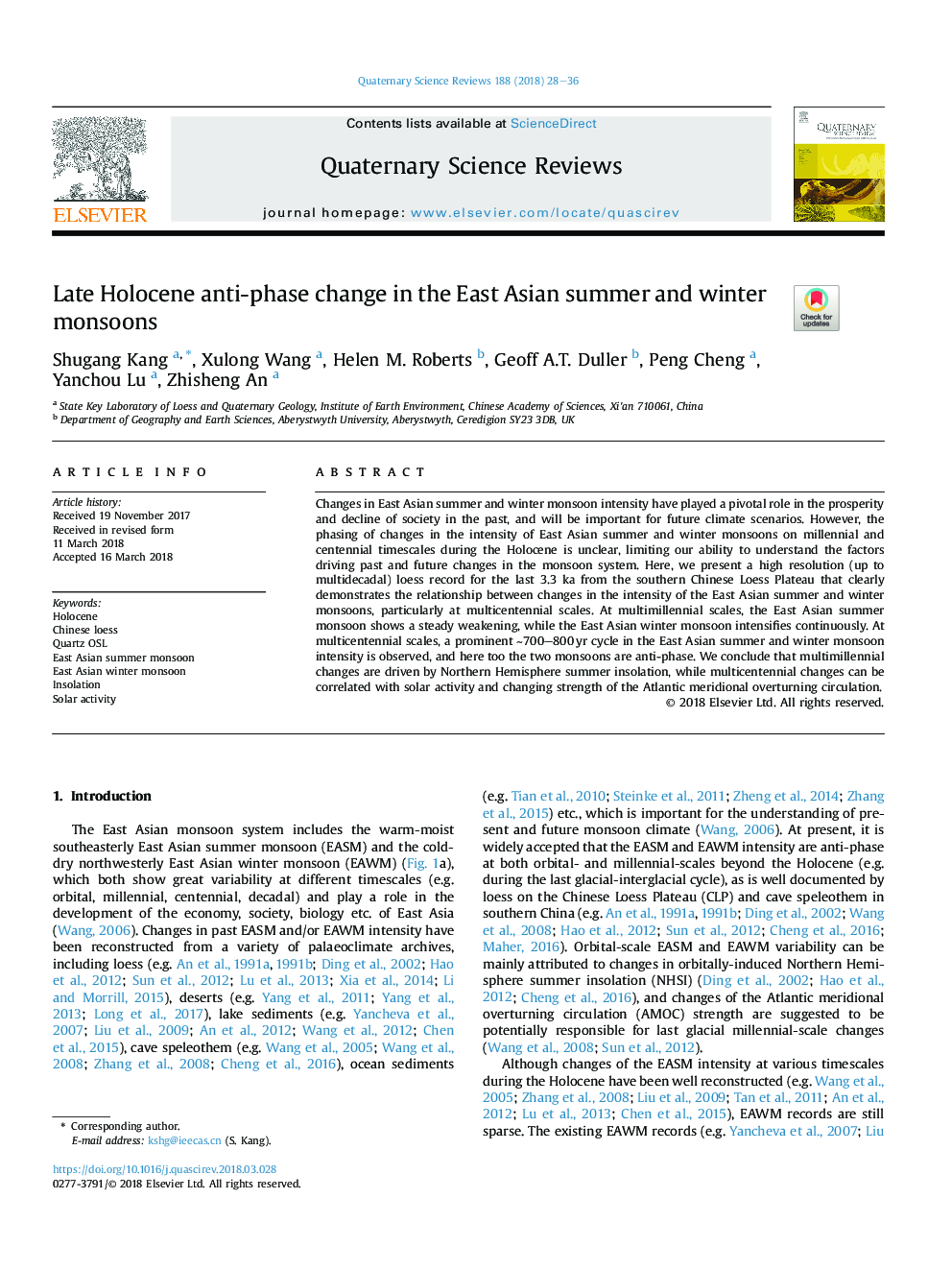| Article ID | Journal | Published Year | Pages | File Type |
|---|---|---|---|---|
| 8914836 | Quaternary Science Reviews | 2018 | 9 Pages |
Abstract
Changes in East Asian summer and winter monsoon intensity have played a pivotal role in the prosperity and decline of society in the past, and will be important for future climate scenarios. However, the phasing of changes in the intensity of East Asian summer and winter monsoons on millennial and centennial timescales during the Holocene is unclear, limiting our ability to understand the factors driving past and future changes in the monsoon system. Here, we present a high resolution (up to multidecadal) loess record for the last 3.3 ka from the southern Chinese Loess Plateau that clearly demonstrates the relationship between changes in the intensity of the East Asian summer and winter monsoons, particularly at multicentennial scales. At multimillennial scales, the East Asian summer monsoon shows a steady weakening, while the East Asian winter monsoon intensifies continuously. At multicentennial scales, a prominent â¼700-800â¯yr cycle in the East Asian summer and winter monsoon intensity is observed, and here too the two monsoons are anti-phase. We conclude that multimillennial changes are driven by Northern Hemisphere summer insolation, while multicentennial changes can be correlated with solar activity and changing strength of the Atlantic meridional overturning circulation.
Keywords
Related Topics
Physical Sciences and Engineering
Earth and Planetary Sciences
Geology
Authors
Shugang Kang, Xulong Wang, Helen M. Roberts, Geoff A.T. Duller, Peng Cheng, Yanchou Lu, Zhisheng An,
